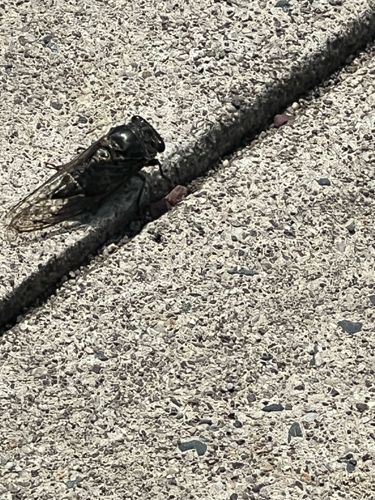Cicada
Scientific Name: Various species within the family Cicadidae (e.g., Magicicada spp. for periodical cicadas, Neotibicen spp. for annual cicadas)
Order & Family: Order: Hemiptera, Family: Cicadidae
Size: Typically 2.5 to 5 cm (1 to 2 inches) in length, though some species can be larger.

Natural Habitat
Cicadas are found in temperate and tropical regions worldwide. They typically inhabit wooded areas, forests, and suburban landscapes where trees are abundant, as both nymphs and adults rely on trees for food.
Diet & Feeding
Adult cicadas feed on tree sap, which they extract using their piercing-sucking mouthparts. Cicada nymphs feed on the xylem fluids of tree roots underground.
Behavior Patterns
Adult cicadas are known for their loud, distinctive songs, primarily produced by males to attract mates. They emerge synchronously in large numbers. Nymphs live underground, feeding on tree roots, for extended periods (some species for many years). Adults are active during the day.
Risks & Benefits
Potential risks are minimal to humans; they do not bite or sting. Large emergences can cause minor aesthetic damage to young tree branches where females lay eggs, and their loud noise can be a nuisance. Benefits include aeration of soil by nymphs, acting as a food source for many animals (birds, mammals, other insects), and contributing to nutrient cycling by returning nutrients to the soil.
Identified on: 8/14/2025